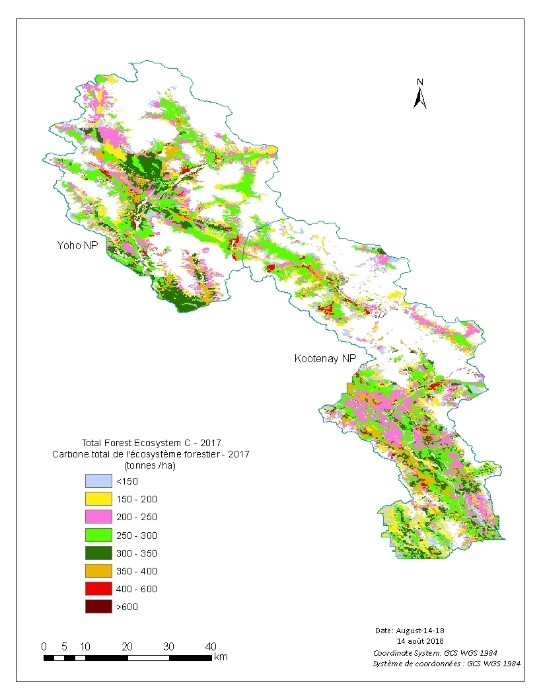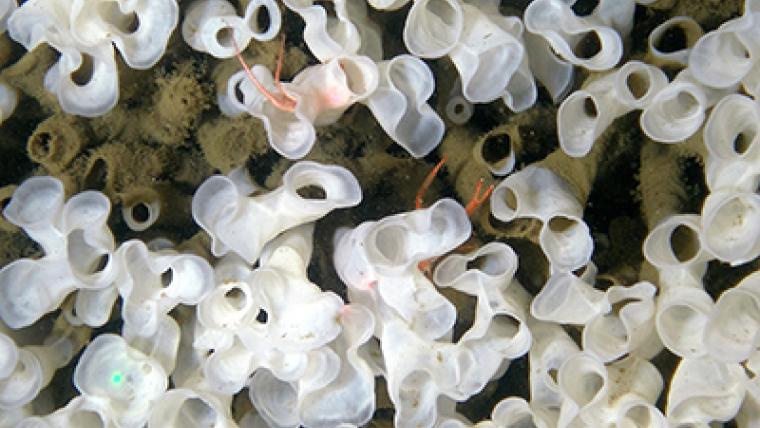Natural Solutions to Climate Change
November 15, 2018
~NRCan works with Parks Canada to create a Carbon Atlas~
Canada’s network of parks and protected areas plays an important role in helping to manage the impacts of climate change. As healthy ecosystems, they’re part of a “natural solution,” one that conserves biodiversity, protects ecosystem services, connects landscapes, builds knowledge and inspires people.

Larger image
Dr. Tara Sharma working with Dr. Werner Kurz to develop a Carbon Atlas.
Protected areas also play an important role in capturing and storing carbon. That’s why Dr. Tara Sharma is working with Natural Resources Canada (NRCan) to develop a Carbon Atlas for Canada’s national parks. This work will help researchers, managers and others explore and visualize carbon dynamics in parks across the country. Tara is an Ecosystem Carbon Scientist with Parks Canada, but her close collaboration with NRCan’s Canadian Forest Service often brings her to the Pacific Forestry Centre in Victoria, B.C., where she works with Dr. Werner Kurz of NRCan and the Carbon Accounting Team.
Tara has compiled geospatial information on forest inventories and other ecosystems, as well as on natural and human-caused disturbances such as wildfires, forest insects and prescribed fires from 1990 to the present. She uses this data in the Carbon Budget Model developed by NRCan to estimate total carbon stocks and net emissions of greenhouse gases from forest biomass and soils.

Larger image
Carbon is measured in Yoho and Kootenay national parks.
The vegetation in natural ecosystems captures and stores carbon dioxide, a major greenhouse gas, through photosynthesis. Trees in forests, wetland plants and phytoplankton in oceans are important for sequestering carbon, and thus function as carbon sinks. Protected areas, as with all natural ecosystems, can also be carbon sources since they release carbon through processes such as decomposition or wildfire. A detailed knowledge of this cycle of carbon capture and release has many uses. As Tara puts it, “The sink–source balance is important to understanding the role of protected areas in climate change mitigation.”
Tara’s work also involves non-forested ecosystems, such as grasslands, tundra and peatlands. She is currently researching different sources of data, including remote sensing information, and exploring other modelling approaches. For example, in collaboration with Environment and Climate Change Canada (ECCC), she will be estimating carbon stocks and fluxes in permafrost in northern Arctic parks using that department’s Canadian Land Surface Scheme and the Canadian Terrestrial Ecosystem Model (CLASS-CTEM). Tara’s work is covering a lot of ground. To date, she has generated estimates of carbon stocks and fluxes for twenty-seven national parks and is continuing to process data for other parks.
Tara also works with Dr. Marlow Pellatt, an ecological restoration specialist with Parks Canada. Marlow studies blue carbon, carbon captured from the atmosphere and stored in coastal marine ecosystems by seagrass, saltmarsh and mangrove plants. His research will also contribute to the Carbon Atlas.
The Parks Canada Carbon Atlas will be a valuable tool to inform decisions and actions related to the management of parks and protected areas in Canada. More broadly, it will deepen our understanding of the important role that parks and protected areas play in the context of climate change.
Page details
- Date modified:


